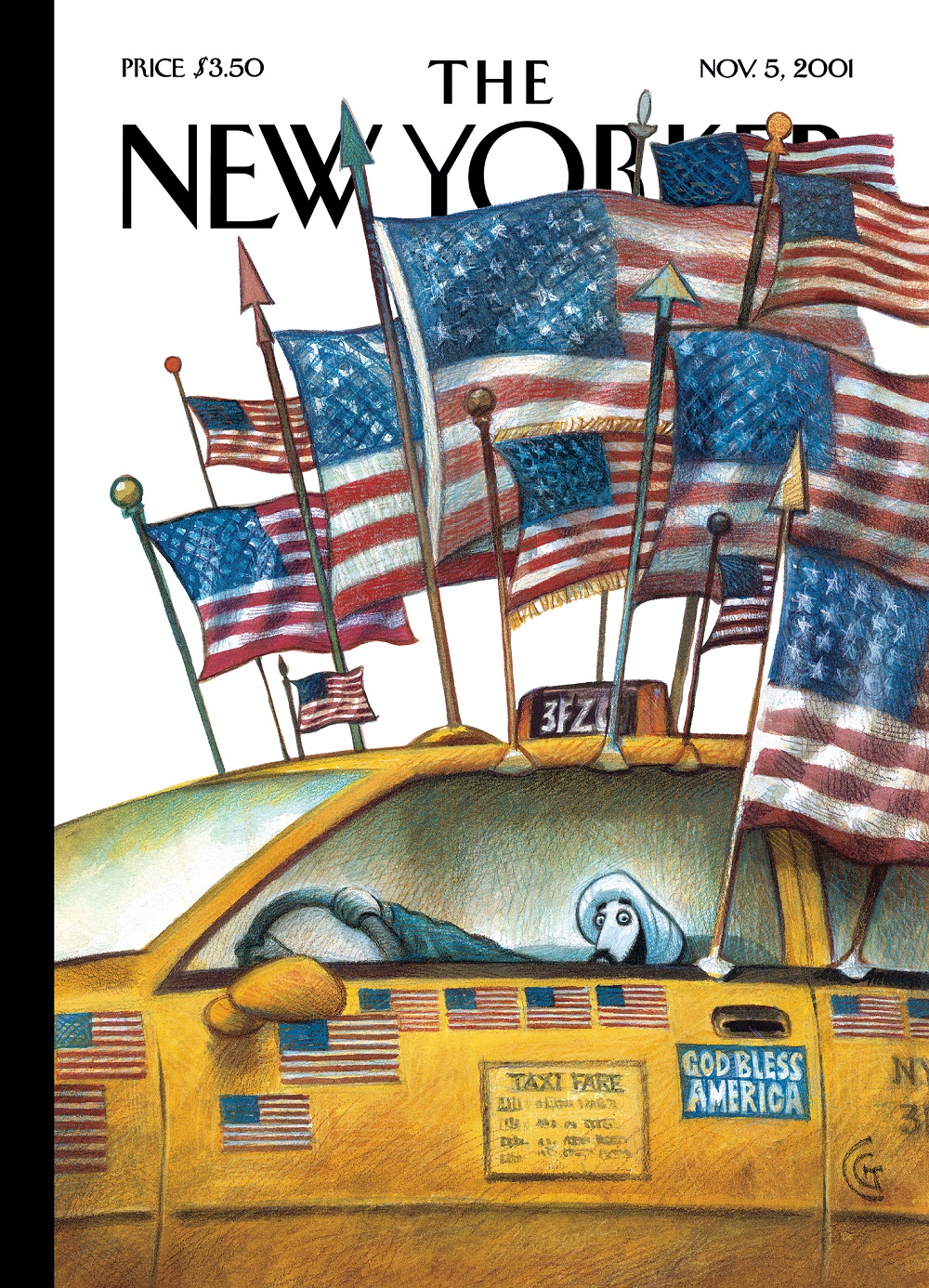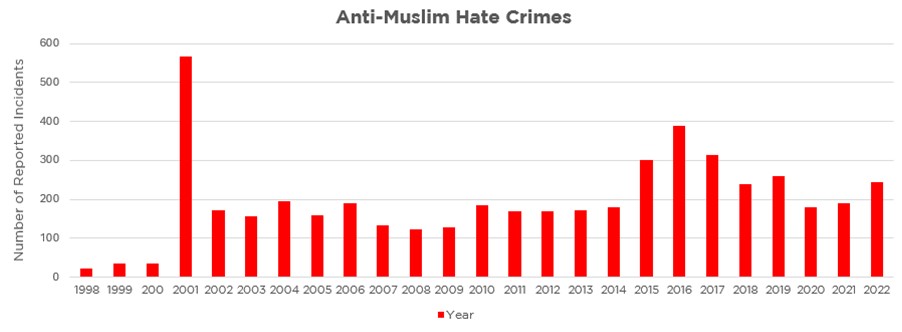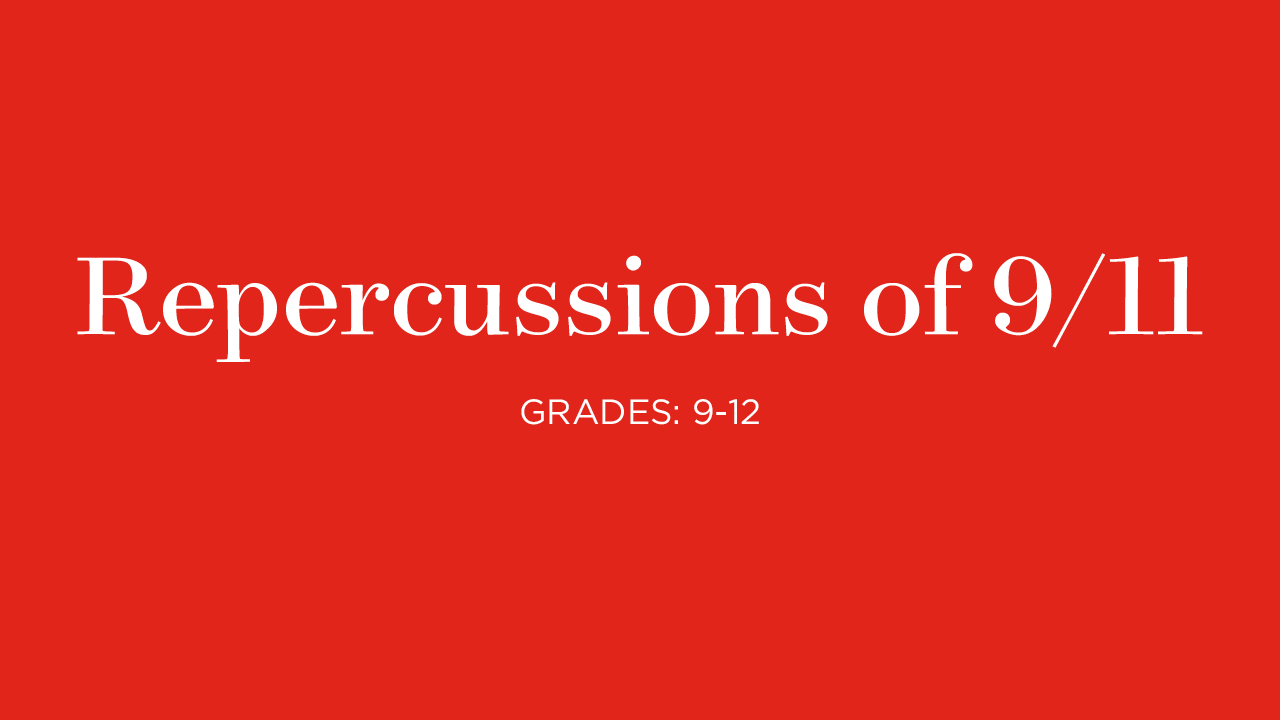Muslims in America After 9/11, Part II
Muslims in America After 9/11, Part II
- Grades 9 to 12
- Lesson Duration: One to two class periods
- Theme: Repercussions of 9/11
Essential Question: How did attitudes toward Muslim-Americans—or those perceived to be Muslim—change after 9/11, and what were the consequences?
Learning Goals
Students will examine the concepts of identity and stereotypes.
Students will investigate causes of the rise of anti-Muslim sentiment after 9/11.
Students will be introduced to multiple perspectives about Islam and terrorism, including voices from within the Muslim community.
Students will understand the difference between Islam and Islamist extremism.
Vocabulary
The New Yorker magazine: This weekly publication provides reporting and commentary on politics, foreign affairs, business, technology, popular culture, and the arts, along with humor, fiction, poetry, and cartoons.
Hate crime: The FBI tracks hate crime statistics through the Uniform Crime Reporting Program. Participation in this program is required for federal law enforcement agencies (LEA) but is voluntary for local, state, and tribal LEAs.

"What So Proudly We Hailed," 2001, Carter Goodrich, Courtesy of The New Yorker © Condé Nast
Activity
1. Review the concepts covered in the previous lesson, Muslims in America After 9/11, Part I, including stereotypes and cognitive shortcuts. Remind students that 9/11 served as a moment that altered people’s perceptions of Muslim-Americans—or those perceived to be Muslim—based on visible identity markers.
2. Tell students they will now look at an example that illustrates why attitudes changed and the consequences of that shift post-9/11.
3. Project or distribute copies of The New Yorker cover, “What So Proudly We Hailed.” Click on the image to use the pinch-and-zoom feature for closer viewing.
4. Allow students one minute to look at the cover and write down or share what they notice. This can be done as a class or in small groups.
5. Lead a guided inquiry with the class using the following questions:
- Who do you see on the cover? How would you describe this person based on how he is drawn? What makes you say that?
- What is happening on the cover? What makes you say that?
- Where do you think this cover takes place? What makes you say that?
- When do you think this cover was published?
6. Conclude the inquiry by asking students what they think this cover says about the concerns of Americans of Middle Eastern and South Asian descent immediately after 9/11 and why.
7. Share the following background information about the cover:
The shock and grief of 9/11 became part of the fabric of American life. Even as many American hoped to return to “normal,” they confronted the dilemma of balancing concerns about safety and security with limitations on cherished freedoms. Americans of Middle Eastern and South Asian descent coped with the added worry of being perceived as terrorists based solely on their appearance.
8. Play the clip below, excerpted from the 9/11 Memorial & Museum’s public program “How to Be a Muslim,” featuring Haroon Moghul. Moghul is a fellow in Jewish-Muslim relations at the Shalom Hartman Institute, a frequent CNN contributor, and author of the memoir, How to Be a Muslim: An American Story. In this clip, Moghul shares his 9/11 story and his immediate reaction to the attacks
Video: Public Program: "How to Be a Muslim" Excerpt 1
9. After viewing the clip, ask students the following questions:
- Where was Haroon on the morning of 9/11?
- What were his concerns before the attacks? After?
- Why do you think he refers to the responsibility of deciding what to do in the wake of the attacks as “a very overwhelming moment?”
10. Play the clip below, excerpted from the public program “How to Be a Muslim.”
Video: Public Program: "How to Be a Muslim" Excerpt 2
11. After viewing the clip, ask students to respond to the following questions:
- Why did he feel he had a responsibility to respond to the attacks?
- According to Moghul, what was the challenge for Muslim-Americans after 9/11?
12. Tell students that for both Muslims and Muslim-Americans, 9/11 was turning point, where perceptions of them shifted dramatically in the wake of the attacks. To illustrate this point, ask students now to investigate the FBI hate crime statistics.
13. Divide students in to small groups and distribute the chart below which tracks incidents of hate crimes against Muslims. For the original data, visit the FBI page on hate crimes. Share the definition of a hate crime from the list of vocabulary terms above. Give students a few minutes to look at the table and answer the following questions. Ask student to report their findings as part of a larger class discussion.
- What are the levels of hate crimes committed against Muslims in the United States before 9/11?
- What happened in 2001?
- Describe the trend after 9/11—what happened?
- What types of incidents are not included in these statistics, but might make someone feel uncomfortable? (Examples could include verbal and non-verbal interactions.)

14. Tell students that while the number of hate crimes committed against Muslims after 9/11 has decreased, it has never returned to pre-9/11 levels. One data point does not mean that 9/11 was the sole factor that caused negative perceptions of Muslims, but it clearly illustrates that the attacks were a turning point.
15. Conclude by returning to The New Yorker cover and reveal its title, “What So Proudly We Hailed,” by Carter Goodrich. Then ask if they think this cover could appear on The New Yorker today and why or why not. Point out that it shows that the attacks continue to be relevant today. Let students know they will explore how to challenge stereotypes about Muslim-Americans or those perceived to be in the next lesson.
Muslims in America After 9/11, Part I

Essential Question: How did attitudes toward Muslim-Americans—or those perceived to be Muslim—change after 9/11? Grades: 9 to 12 Theme: Repercussions of 9/11
Muslims in America After 9/11, Part III

Essential Question: How did attitudes toward Muslim-Americans—or those perceived to be Muslim—change after 9/11, and what were the consequences? Grades: 9 to 12 Theme: Repercussions of 9/11